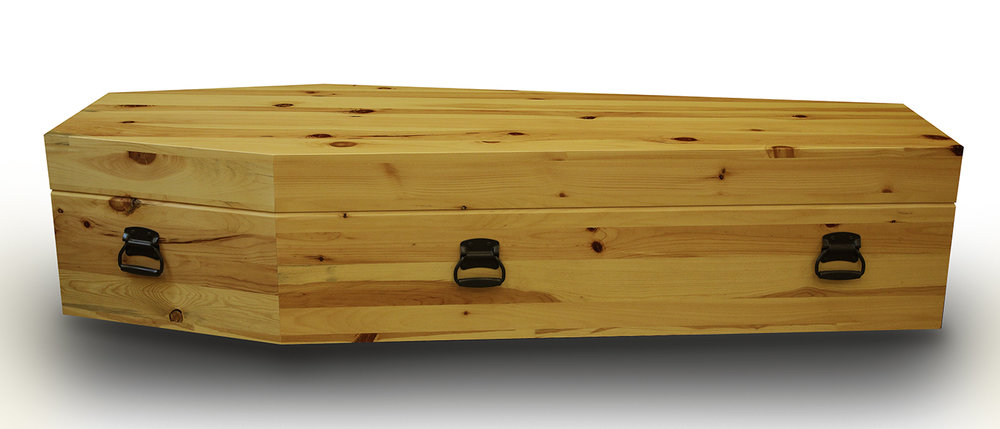Some years ago, a friend turned to me during the funeral ceremonies at a church and said: “They do death well here.” And indeed, they had. Everything from the viewing of the body, the greeting of the family, and the rosary, to the funeral itself, was held in the church. Everything was undertaken in view of the altar, the crucifix, and Christ present in the tabernacle. And there was a deep sense of prayer and respect.
I have never understood the concept of the “funeral home.” These creepy places are just about the furthest thing from a “home” you can imagine. The furniture is never “homey.” It’s more like the furniture in a rich, old lady’s house you are never meant to sit on or touch. The air is still, usually stale, and everyone walks around talking in hushed tones. Sometimes you notice there is light music playing in the background, barely discernible but inescapable once you notice it – the kind of white noise from which even elevator-music would be a joyful respite. And I haven’t even begun on the problems with big metal caskets and embalmed corpses.
We have forgotten how to bury our dead. When a church does death well, there is a sense of remembrance without having to go through all the details of the person’s life. There is a clear sense that the person belonged, that he or she was an important part of the community; that something is missing now, but that we carry on nonetheless because theirs was a life dedicated to this community. So when we carry on their good work (not merely getting on with our day) and dedicate ourlives to the community he or she served, caring for his or her children and grandchildren, tending the garden, building up the institution in the same spirit with the same vision, then we remain united to them and they with us.
This sense of connection is fostered by (and ultimately must be grounded in) belief in the communion of saints. When those we love die, we do not merely lose them, we gain an even deeper communion with them. Christ’s resurrection and the doctrine of the general resurrection reveals that our actions, experiences, and relationships are not simply lost or negated with death. They are glorified. We can be present in an even more dramatic way with the persons and communities we love, no longer limited by time and space.
But ours is a resurrection of the body, not a freeing of a gnostic spirit imprisoned in a body. Orthodox Jews and Muslims share with Christians a belief in the resurrection of the body. This is why Orthodox Jews and Muslims insist on burying their dead. They do not burn the bodies and put the ashes in a box on a shelf and then say to visitors, “We haven’t quite decided what to do with that yet.”We have forgotten how to bury our dead. And it is not a trivial thing not to know how to bury the dead.

If the Church wants to restore its place in the community, it would once again take responsibility for burying the dead. It should be ready to step in and just take care of things. All the messy, often distressing “business” that people have to go through to bury their loved ones when they are deep in grief should be handled by their church. What takes place in those creepy “funeral homes” should happen in the church: the wake, the rosary, the greeting of the loved ones, probably even the potluck meal.
The church should provide the services and then provide the space for burial near the church. We need to restore the practice, lost in the nineteenth century, of burying our dead in the “churchyard.” People shouldn’t have to travel miles on special occasions to visit the resting places of their loved ones in some potter’s field somewhere; they should be able to pass by the visible symbol of their continued presence on the way to Mass. And the members of the community should be united with their predecessors continually in this way every day. They should find solace in the fact that they too one day will rest with those who came before them.
I know of a cemetery near a university campus where most of the members of a religious order are buried beneath simple crosses. I have known plenty of people, young and old, who visit that place regularly because they find it spiritually comforting and profoundly grounding. It puts things into perspective, they say, and reminds them of what is truly important in life.
People say, “But we can’t bury bodies in our churchyard because municipal regulations prohibit it.” I know. But lawyers have successfully fought those outdated regulations, meaningful only when cities had no way of preserving rotting corpses, and you can too – fight for the right to do what churches have done for centuries.
There would still be work for undertakers to do, of course. Churches need not retrieve bodies from the morgue, embalm corpses, or provide coffins – although there are churches that provide inexpensive wooden coffins to families, especially the poor. And no one actually needs to be embalmed. ($10,000 to bury someone? People who aren’t rich don’t have enough money to live or die in this country anymore.)
If churches can re-learn how to do this one thing well, they will earn the deepest gratitude and admiration not only of their members, but even of many of the hardest hardcore unbelievers, for the care they were shown during their darkest hour. If, on the other hand, churches can’t bring themselves to do this one thing – to be there for people in their time of need – then they shouldn’t be surprised if they become ever more irrelevant in society and viewed with increasing contempt for their feckless inability to carry out one of their most basic duties.














